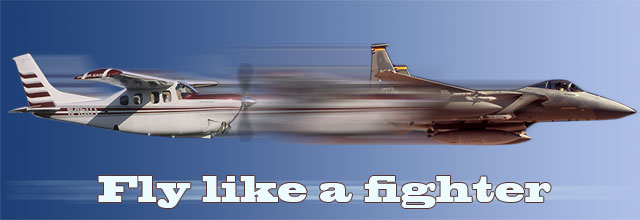I was in the T-38 phase of Air Force pilot training and was recently assigned a brand new instructor pilot, fresh out of his own training. I already had earned a reputation as a good student so he was looking forward to flying with me on our first flight, which was a four-ship formation sortie. It was a clear VFR day with me starting as the No. 4 wingman, and we would do single-ship takeoffs with 10-second intervals. This would put me about a mile and a half in trail of the lead for the straight-ahead rejoin.
 On a two-ship rejoin after takeoff, the wingman would normally initially accelerate to 350 knots while lead held 300 knots. The No. 3 aircraft would accelerate to 350 to 380 knots, and No. 4 to 350 to 400 knots. With afterburners still cooking, and gear and flaps retracted, I heard a “yeehaw!” from the back seat. It was one of those great moments, we were both excited to be flying that day. Around 350 knots, my instructor pilot could feel me starting to pull the throttles back to come out of afterburner. He then instructed me to “keep them burners cooking!” At 400 kt, he was laughing with more excitement, banging his hands on his canopy, and shouting a joyous chorus of encouragement.
On a two-ship rejoin after takeoff, the wingman would normally initially accelerate to 350 knots while lead held 300 knots. The No. 3 aircraft would accelerate to 350 to 380 knots, and No. 4 to 350 to 400 knots. With afterburners still cooking, and gear and flaps retracted, I heard a “yeehaw!” from the back seat. It was one of those great moments, we were both excited to be flying that day. Around 350 knots, my instructor pilot could feel me starting to pull the throttles back to come out of afterburner. He then instructed me to “keep them burners cooking!” At 400 kt, he was laughing with more excitement, banging his hands on his canopy, and shouting a joyous chorus of encouragement.

Like one of Pavlov’s dogs, egged on by the cheering section in the back seat, I made it to 425 knots before coming out of burner. I could tell I was closing on the three jets ahead of me, but still being a low time student I hadn’t quite captured the “picture” of size versus closure rates. The lead was holding a shallow climb—not so steep that the rejoin would be more difficult for the wingmen, but enough of a climb that it would help us slow down to 300 knots as we got close. I started to pull power back as the airplanes started getting really big really quickly. It was too late. I passed the three ship still doing 400 knots. That was a blur. My instructor was no longer cheering.
Right after I passed them, lead had to start his 90-degree turn to head to the military operations area. I was now in idle power with the speed brakes hanging and had to regain sight of the group behind me before I could attempt another rejoin. By the time I saw them in their climb, I was two miles away. It took me another 20 miles before I joined up. My instructor pilot and I bought beers that Friday night at the club.
After takeoff, I was in unfamiliar territory when I accelerated past 350 knots for the rejoin and was initially uncomfortable—until I was coached and encouraged by my instructor. Then it was pure fun to be going that fast and I had no worries in the world. I assumed my instructor pilot knew what he was doing with his instruction. On the flip side, my instructor, too, was having too much fun. His assumption was that I was a good student and could handle a 400-plus knot rejoin, and that I had done this before. He didn’t know that I hadn’t. We both had incorrect assumptions about the other, based on limited information that seemed accurate. However, both of us flew way past our piloting abilities that day.
Assumptions in aviation aren’t the best things to rely on. Set your limits and stick to them, even if you have a cheering section inside (or outside) of your airplane.
Larry Brown of Colorado Springs, Colo., is a retired Air Force F-15 pilot who is using the lessons he learned as a fighter pilot as a GA pilot in his Cessna P210. Brown, who has 2,700 hours total time during his 33 years of flying, also was an instructor pilot and flight examiner in the Air Force T-38 and instructor pilot in the T-52, the military’s version of GA’s Diamond DA40. See previous installments of “Fly like a fighter.”



